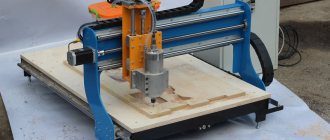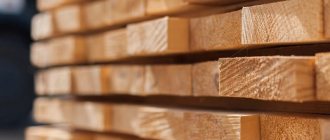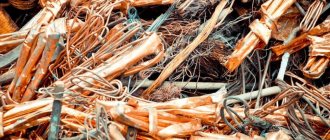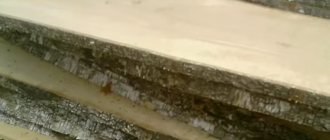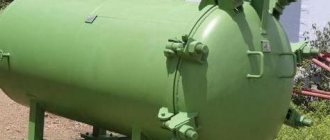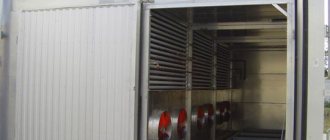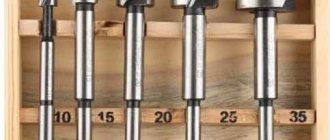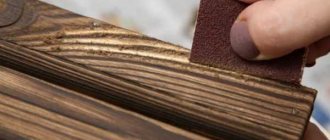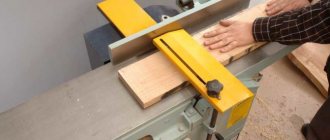Wood has been and remains one of the most popular materials used by humans.
It is difficult to find a field of activity where there would be no place for products made from it. Wood processing inevitably generates waste that needs to be processed or disposed of.
Professional processing of wood waste is a profitable business that allows you to take care of the environment and make good money from it.
Types of wood waste
The classification divides wood waste into four main groups. Forests in the country occupy a huge area, and the absence of a deficit leads to negative consequences. Most waste is supplied by enterprises related to the forestry industry and processing.
Every year, sanitary cleanups are carried out affecting cities and towns. There is a lot of wood waste found in household waste.
Various characteristics and differences have made it possible to distinguish several varieties. Conventionally, they can be divided into two main categories.
- During harvesting, sawing and cutting, waste of small and large fractions is inevitably present that needs to be crushed.
- The enterprises produce a variety of materials that are in demand in construction and furniture production. Wood residues that are suitable for recycling accumulate.
Active use of wood should not lead to losses associated with disposal. Each group is able to provide material for processing.
First group
The first group included wood waste generated during sawing of trees into boards. What remains is a slab of the given parameter and decent pieces, since the tree is sawn down to half.
Second
The second category is distinguished by different types of trimmings. Transverse and end, longitudinal and lump parts are complemented by sections, ridges and remnants of wood parts.
Third
The third group includes products made from wood waste. There are remains of chipboards, multi-layer plywood and veneer. Some components are added after reconstruction and repair.
Fourth
Wood processing waste is included in the fourth category. Bark and sawdust, shavings and wood dust can be returned to production and reduce the cost of production.
Today it is customary to divide types into two types - business and non-business. This depends on the nature of the biomass. Large trimmings and pieces are readily used in enterprises that manufacture wood products. Small shavings, sawdust and fractions are almost harmless (class V according to FKKO), but can be profitable after processing.
Obtaining fertilizers from wood and wood waste
Everyone knows that to improve soil fertility, fertilizers of organic origin are used: manure, peat, etc. To eliminate the deficiency of organic components in infertile soils, fertilizers based on wood and wood waste can also be used.
For example, many people use sawdust to improve soil quality when growing raspberries. But using sawdust alone is ineffective.
To increase the fertility of agricultural land, it is more correct to use composts. An excellent fertilizer is obtained by composting shredded wood waste with the addition of some nutrients and microelements.
Due to the variety of chemicals and good humus-forming ability of tree bark, composts are most often created on its basis. It contains large amounts of carbon, potassium and calcium.
Composting bark consists of several stages:
- Raw materials are crushed using hammer mills, box grinders or feed grinders (for example, Volgar-5). The size of the resulting pieces should not exceed 1 cm.
- The crushed mass is mixed with inorganic nitrogen and phosphorus compounds.
- Clusters are formed in which the compostable mixture is stored for 1.5 - 4 months. The piles are periodically turned for better aeration.
The humus obtained after composting has the properties of humus; its use in agriculture helps to increase plant productivity.
In addition, the bark can be used in a non-compostable form. It is crushed to produce mulch, which, when applied to the soil cover, impedes the growth of weeds, slows down the process of water evaporation, prevents the formation of a soil crust and reduces the difference in soil temperatures at night and during the day.
Wood-based fertilizers can be produced in a variety of ways, only a few of which were discussed in this article.
The situation with waste materials
The current situation with waste materials in the country causes concern and alarm due to violations of environmental and sanitary standards. Large companies that do not miss the opportunity to reuse wood residues cause fewer complaints. Waste recycling is carried out on site.
Small and medium-sized enterprises are trying to purchase wood. There is no rational use of waste, since the recycling process has not been established. Of course, the volumes are small and it is important to arrange export to an enterprise that is ready to deliver products from recycled materials after processing.
Cost-effective options for using sawdust
There are many ways to make money from wood waste, particularly sawdust. Production from sawdust and wood waste is a good business option.
We list the main options , and below we will consider some of them in more detail:
- Production of sawdust concrete. Possible both at enterprises and privately.
- On livestock farms, sawdust can be used as bedding for livestock.
- In greenhouses and industrial greenhouses, sawdust can act as a component of the soil and plant nutrition.
- Sawdust itself is an excellent fuel.
- Sawdust – compost in agriculture.
- For private homes, sawdust is used as insulation in attics and basements.
- Production of OSB, chipboard, fiberboard, MDF, furniture structures, sawdust and shavings are the main raw materials.
- For wastewater treatment plants in industry, sawdust can serve as a filter for waste water.
- Sawdust mixed with peat is an excellent filler for dry closets.
Pine extract
During the cooking of pine and cedar bark and woody greens, condensation accumulates at the bottom of the distillation tank, which is called bottoms.
One of the inexpensive productions is its processing into pine extract.
Coniferous extract has a lot of biologically active substances that dissolve during prolonged cooking in water.
This condensate contains a large number of substances that have a beneficial effect on living organisms, including humans:
- vitamins;
- chlorophylls;
- organic acids.
Concentrating the condensate turns it into a pine extract with high consumer properties .
The extract can be successfully used as a feed additive for livestock and poultry in agriculture, as well as in the form of a preparation for taking medicinal baths. Coniferous extract can also be used for the industrial production of antibiotics for animals.
Feed meal
After digestion of the extract, approximately 90% of the original raw materials (pine and cedar bark, green wood) remains in the form of waste solid waste . The income of a wood business can be increased by further processing of solid waste into feed meal.
Feed flour has bactericidal and anti-tuberculosis properties. It can be used as an alternative to roughage.
Fertilizers
Fertilizer can be prepared from wood waste using a fairly simple composting process.
The main costs of implementing this project are laying and equipping trenches for preparing compost mass.
It would be advisable to use such compost to improve the fertility of highly mineralized and loamy soils.
Charcoal
Wood waste processing is a promising area with many areas for implementation. Many technologies that are based on the processing of wood waste are successful in the market.
Charcoal is one of the most efficient and environmentally friendly fuels, consisting of almost one hundred percent carbon. When burned, it does not poison the air with toxic fumes and is quite convenient for quickly preparing food.
Such coal can be used not only on the farm, but also in industrial production .
A number of chemical and metallurgical industries, from small to large, operate on it. In construction it is used as an insulating material. Just like other wood waste derivatives, it is successfully used in agriculture as a feed additive for livestock and poultry.
Fuel
The waste wood waste can be used for further processing as fuel.
The use of modern and environmentally friendly fuels will help provide the population with inexpensive energy resources, while reducing the amount of harmful emissions into the atmosphere.
Thus, the negative impact on the environment is reduced and the sanitary condition of forests is improved.
In recent years, EU countries have been experiencing a very active transition to fossil fuels.
The market is stimulated by government agencies, turning towards:
- fuel pellets;
- briquettes;
- firewood
In addition, there is a type of sawdust processing called pyrolysis. We talked about it here.
Energy resources from wood waste are currently purchased in significant quantities, so this type of business in the production of sawdust and wood waste will bring a stable income.
Solutions to material problems
A certain shift has occurred in recent years. Now it is possible to supply waste directly to a company opened near a small plant for further processing and return to production.
Energy workers have begun to show significant interest in wood residues. Instead of harmful burning in a landfill, it is better to get:
- excellent particle boards;
- pellets and fuel (for boilers and power plants);
- materials for insulation of buildings;
- sealants and alcohol;
- numerous products, including plastic.
The benefits are visible to the naked eye. There is no need to increase the volume of wood harvesting. The state of the environment is no longer a cause for concern; processing of wood waste meets environmental requirements.
Recommendations for organizing waste processing plants
The main (standard) directions for involving wood waste in economic circulation, recommended for large-scale implementation in most regions of Russia, should be considered:
- sale of lumpy wood waste for firewood to the population;
- sale of wood waste to harvesting enterprises, including in the form of wood chips or for its production;
- organization of production of construction materials (slabs, wall stones, wood-polymer boards, etc.).
Production from wood waste
Wood processing is a promising business area. Setting up a production process is beneficial for several reasons.
- The level of competition is not too great, and it is possible to expand the customer base in a short period of time.
- A constant supply of raw materials is guaranteed. At the same time, the cost is quite low and covers the costs.
- It is not difficult to find specialized equipment from domestic and foreign manufacturers. The processing process is automated and does not require the involvement of a large number of workers.
The processed product will not gather dust in the warehouse. Furniture makers and builders will be happy to purchase inexpensive material.
Wood waste of low quality can be beneficial when burned. It is possible to obtain thermal and electrical energy, hot water and steam. The list of products made from recycled wood material is growing every year.
Briquettes
The advent of briquettes led to unexpected demand. In terms of their characteristics, they are not inferior to coal and emit a similar amount of heat.
The production includes a crusher, drying and pressing mechanisms along with loading and cooling units. Binding components from petroleum products are added. Ash from waste is environmentally friendly and is useful as fertilizer.
Main directions of economic use and processing of wood waste
- Process chips for use in: production of fiberboard, chipboard and fiberboard, pulp and paper industry (PP), hydrolysis production, wood chemical industry
- Use in wood chemical and hydrolysis production
- As fuel or for fuel production
- Production of wood concrete and similar products from lightweight concrete with wood filler
- Production of containers
- Production of consumer and industrial products
Briquetting sawdust at home
In a private home, it is easy to set up sawdust briquetting, which helps save on heating costs. Production is divided into several stages:
- Initially, the residues are soaked and mixed with clay or adhesive mass;
- the resulting workpiece falls into the mold and pressing occurs;
- drying will take place under natural conditions on the street after laying out the briquettes.
The press can be made on your own. The design with a screw drive and a container for installing forms has proven itself well. A more complex mechanism has a lever, and this will facilitate the production and recycling of waste
Processing methods
Two methods are used to perform primary waste processing. The most widely used method is the mechanical method using shredders.
- The devices have inclined and horizontal loading. They are divided into rotary, disk and knife.
- Hammer crushers work effectively. Heavy hammers can handle a whole barrel and large fractions.
- The shredder is equipped with rotating knives and produces chips of a given parameter.
Crushers are distinguished by versatility, the ability to work with wood and residues. The chemical option for processing wood waste will require certain investments.
Chemical
The advantages of the chemical method lie in the ability to produce fairly valuable materials. When exposed to waste with chemical compounds:
- obtain products for paper and pulp mills;
- wood is processed by hydrolysis;
- carry out distillation using pyrolysis;
- get cheap turpentine and rosin.
Wood waste is processed at specialized enterprises using appropriate equipment and technologies. Products in demand include cardboard and paper, acids and protein compounds.
Mechanical
The simplicity of the mechanical method reduces the cost of the processing process. Grinding wood pieces and fractions to the state of chips is easy to establish even on a personal plot. The raw materials are subsequently supplied for chemical processing or materials production.
Processing equipment
Equipment for different branches of production from sawdust and wood waste depends on the specific focus of the business. There are a number of the most common installations required for processing wood raw materials, consisting of:
- low-speed shredders used to convert wood into chips with a size of 0.8-1 cm;
- shredders that crush waste of various sizes, equipped with special cutting knives;
- horizontal shredders;
- briquetting presses used in the production of fuel briquettes;
- silos designed for storing, transporting and unloading raw materials.
You can see what the installations included in the deep wood processing line look like in the following short video
